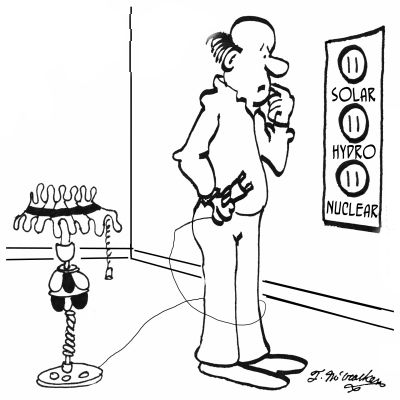 How many of us, in this day and age of the smartphones, are struggling with constantly having to charge our beloved device? Long gone are the days when you can charge your phone and forget it for a couple of days, now you’re lucky if you can make it through the day without plugging it in somewhere.
How many of us, in this day and age of the smartphones, are struggling with constantly having to charge our beloved device? Long gone are the days when you can charge your phone and forget it for a couple of days, now you’re lucky if you can make it through the day without plugging it in somewhere.
Ted Tewksbury, Chief executive of California-based IDT (Integrated Device Technology), is tackling this issue with the introduction of a new set of microchips that will deliver “contactless charging”.
His vision is getting rid of the conventional phone-charging cables through incorporating existing technology; inductive coupling.
Inductive charging
Inductive charging uses the electromagnetic field to transfer energy between two objects. A charging station sends energy through inductive coupling to an electrical device, which stores the energy in the batteries. Because there is a small gap between the two coils, inductive charging is one kind of short-distance wireless energy transfer. The other kind of charging, direct wired contact (also known as conductive charging or direct coupling) requires direct electrical contact between the batteries and the charger. Conductive charging is achieved by connecting a device to a power source with plug-in wires, such as a docking station, or by moving batteries from a device to charger. Induction chargers typically use an induction coil to create an alternating electromagnetic field from within a charging base station, and a second induction coil in the portable device takes power from the electromagnetic field and converts it back into electrical current to charge the battery. The two induction coils in proximity combine to form an electrical transformer.
So how will this actually work?
Well, imagine instead of having to plug your phone into the wall when the battery runs low, you can simply place it onto the wireless charging surface; which could be either your desk, a cup holder in your car or even the armset of an airplane seat.
IDT hopes to grab a slice of a small but potentially sizeable market for wireless smartphone charging chips that could reach $800 million by 2014.
Tewksbury seems quite confident that if enough phone manufacturers would be willing to take the plunge and build it into the smartphone software, then carand even furniture makers are sure to follow!
Yet it remains ambiguous as to how this new technology will boost cost to both producers and consumers. IDT says, though, that in mass production, the chips by themselves would add less than $2 to the cost of a smartphone.
Wireless charging technology could also be used for laptop computers, digital phones, tablets and MP3 players.
Texas Instruments and other chipmakers are offering competing chips but IDT’s are smaller and cheaper, Tewksbury argues.
“We expect some revenue by the second half of the year,” he said. “By 2014 you can expect IDT will be the market share leader. How much revenue? That will depend on how many other players there are and how fragmented the market becomes.”
![]()

Looking for a simple, elegant backup solution?
Genie Timeline 2012 is a new version of the number one continuous data protection program Timeline 2.1. It offers the first metro style user interface; enhanced performance, and added features. Like us on Facebook and Follow us on Twitter for the latest news.
>Follow @Genie9backup
![]()

